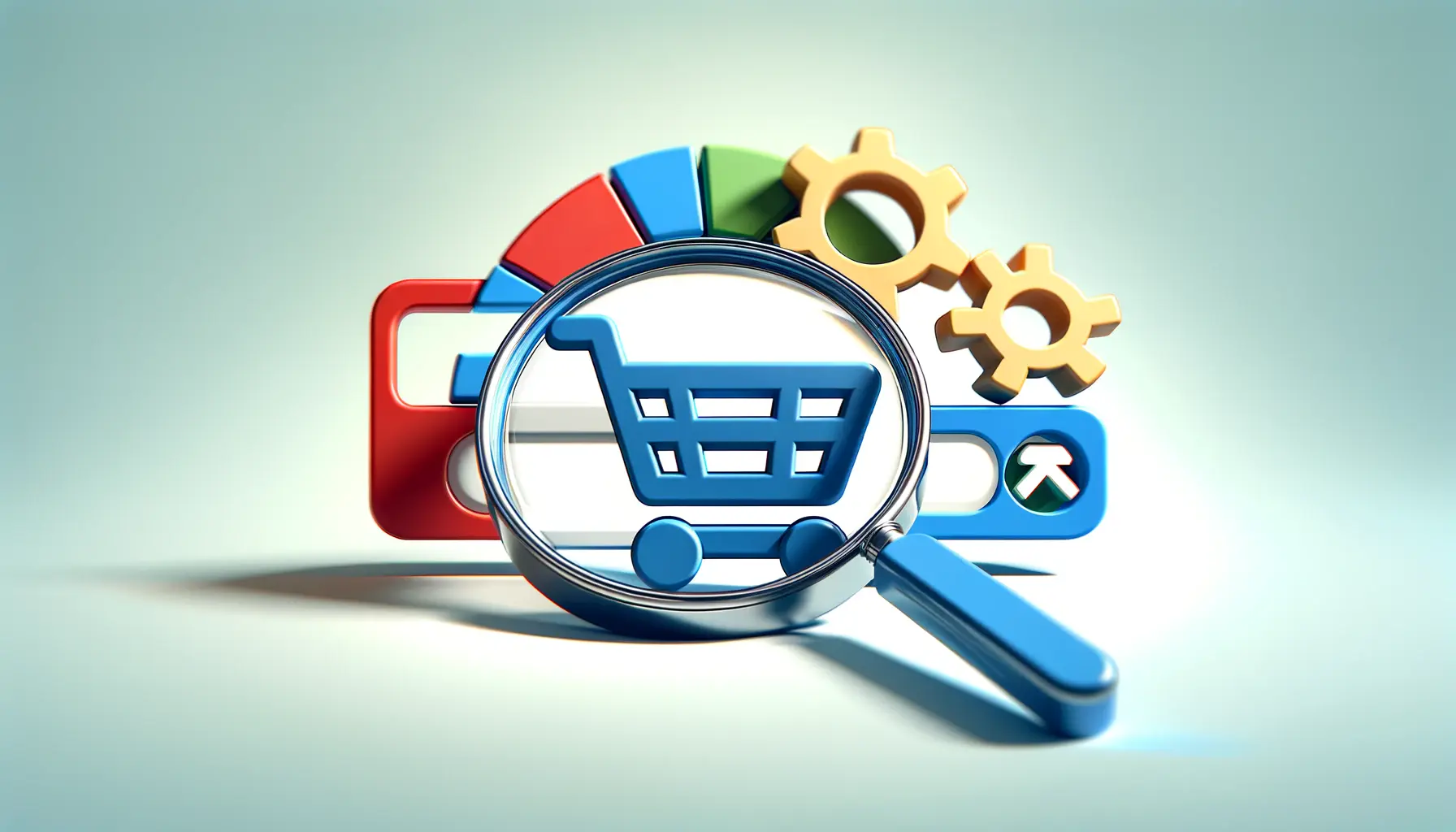Optimizing product pages is a crucial aspect of SEO for online retail, ensuring that products not only reach their target audience but also compel them to make a purchase.
In the digital marketplace, where competition is fierce and attention spans are short, the ability to stand out through search engine rankings can make or break an online retail business.
This comprehensive guide delves into strategies and best practices for enhancing product page visibility and effectiveness, aiming to provide valuable insights for businesses looking to improve their online presence and sales.
The journey towards optimizing product pages for better ranking involves a multifaceted approach, focusing on content quality, user experience, and technical SEO.
By understanding and implementing these strategies, businesses can significantly increase their chances of ranking higher in search engine results pages (SERPs), driving more traffic to their product pages, and ultimately, boosting sales.
Let’s explore the essential components and techniques for achieving optimized product pages that not only rank well but also convert visitors into customers.
- Understanding Product Page SEO
- Keyword Research and Selection
- Optimizing Product Titles and Descriptions
- Enhancing Visuals with High-Quality Images and Videos
- Utilizing Structured Data for Enhanced Visibility
- Optimizing for Mobile and Page Speed
- Building Quality Backlinks to Product Pages
- Maximizing Success Through Product Pages Optimization
- FAQs on Product Pages Optimization for Better Ranking
Understanding Product Page SEO
At its core, product page SEO is about making your online store’s product pages more visible and attractive to search engines and users alike.
It involves optimizing various elements of your product pages, including titles, descriptions, images, and URLs, to improve their ranking in search engine results.
The goal is to attract more targeted traffic to these pages, which can lead to increased sales and revenue for your business.
However, optimizing product pages goes beyond just inserting keywords.
It requires a strategic approach that considers the user’s intent, the competitiveness of the market, and the ever-evolving algorithms of search engines.
By focusing on providing valuable and relevant content to your potential customers, you can improve the user experience, which is a critical factor in search engine rankings.
Key Components of Product Page Optimization
Several key components play a vital role in the optimization of product pages.
These include:
- Product Titles: Crafting descriptive and keyword-rich titles that accurately reflect the product while appealing to potential customers.
- Product Descriptions: Writing compelling and informative descriptions that provide value to the reader and include targeted keywords.
- High-Quality Images: Using high-resolution images that showcase the product from various angles, improving engagement and trust.
- Structured Data: Implementing schema markup to provide search engines with detailed information about your products, enhancing visibility in search results.
Optimizing these components not only helps in improving your product pages’ ranking but also enhances the overall user experience, encouraging visitors to spend more time on your site and consider making a purchase.
Optimizing product pages for SEO is not just about improving rankings but also about enhancing the user experience to increase conversions.
Keyword Research and Selection
Keyword research is the foundation of any successful product page optimization strategy.
It involves identifying the terms and phrases that potential customers use when searching for products online.
By understanding these search queries, businesses can tailor their product pages to meet the needs and preferences of their target audience, thereby increasing the likelihood of attracting qualified traffic.
However, keyword selection should go beyond merely choosing high-volume search terms.
It’s essential to consider the search intent behind the keywords.
Are users looking to buy, or are they simply seeking information?
Focusing on transactional keywords with clear buying intent can lead to higher conversion rates, as these users are closer to making a purchase decision.
Utilizing Long-Tail Keywords
Long-tail keywords, which are longer and more specific phrases, can be particularly valuable for product page optimization.
These keywords often have lower search volumes but can attract more targeted traffic, leading to higher conversion rates.
For example, instead of targeting the highly competitive keyword “running shoes,” a more specific long-tail keyword like “women’s trail running shoes for overpronation” can attract users with specific needs, who may be more likely to make a purchase.
Incorporating long-tail keywords into product titles, descriptions, and other on-page elements can significantly improve the visibility of your product pages for niche searches.
Additionally, these keywords can help your pages rank for a variety of related queries, expanding your reach and attracting a broader audience.
Consider the user’s search intent and focus on long-tail keywords for higher conversion rates and more targeted traffic.
Optimizing Product Titles and Descriptions
Product titles and descriptions are among the most critical elements of your product pages.
They not only inform the user about the product but also play a significant role in your page’s search engine optimization.
A well-crafted title and description can make your product page stand out in the SERPs and attract more clicks.
Best Practices for Product Titles
- Be Descriptive: Include key details such as the product name, brand, model, and any unique features or specifications.
- Use Keywords Wisely: Incorporate relevant keywords naturally, without stuffing. Prioritize keywords that match the user’s search intent.
- Keep It Concise: While being descriptive, ensure your titles are not overly long. Aim for a length that is easily readable in search results.
Writing Compelling Product Descriptions
- Highlight Benefits: Focus on how the product can solve a problem or improve the user’s life. Mention key features but emphasize the benefits.
- Include Keywords: Just like in titles, use relevant keywords in your descriptions. However, ensure the text remains natural and engaging.
- Use Bullet Points: Break down features and benefits into bullet points for easier readability. This format helps users quickly scan the content.
- Tell a Story: Whenever possible, weave a narrative around the product to create a connection with the potential buyer. Stories can make your product more memorable.
By optimizing your product titles and descriptions, you not only improve your SEO but also enhance the user experience.
A clear, informative, and engaging title and description can significantly increase the chances of a user clicking through to your product page and making a purchase.
Effective product titles and descriptions are key to both search engine visibility and user engagement.
Enhancing Visuals with High-Quality Images and Videos
Visual content plays a crucial role in the online shopping experience.
High-quality images and videos can significantly enhance product pages, providing users with a clear and detailed view of the products.
This visual representation is vital for convincing potential customers to proceed with a purchase, as it helps them better understand the product’s features, quality, and suitability for their needs.
Implementing High-Quality Images
- Variety: Include multiple images from different angles to give a comprehensive view of the product. This approach helps replicate the in-store experience where customers can examine products closely.
- Zoom and Resolution: Ensure images are high resolution and enable zoom functionality. Customers appreciate being able to see product details up close.
- Consistency: Maintain a consistent style and background for all product images across your site. This consistency contributes to a professional and trustworthy site appearance.
Leveraging Product Videos
- Demonstrations: Use videos to demonstrate how the product works or to show it in action. This can be particularly effective for technical products, gadgets, or items with unique features.
- Testimonials: Including video testimonials or reviews can add a layer of trust and authenticity, as potential buyers see real people endorsing the product.
- Optimization: Ensure videos are optimized for web use to prevent slow loading times. Additionally, include relevant keywords in video titles and descriptions to improve SEO.
By enhancing your product pages with high-quality images and videos, you not only improve the user experience but also boost your SEO efforts.
Visual content can increase the time users spend on your pages, which is a positive signal to search engines and can contribute to higher rankings.
Visual content is not just about aesthetics; it’s a powerful tool for improving user engagement and SEO performance.
Utilizing Structured Data for Enhanced Visibility
Structured data is a critical element in modern SEO strategies, especially for e-commerce product pages.
It involves marking up your content so search engines can understand it better.
This markup helps search engines display your products in rich snippets, which can significantly enhance visibility in search results and improve click-through rates.
Implementing Product Schema Markup
- Use Schema.org Vocabulary: Utilize the Schema.org vocabulary to mark up your product pages with relevant information such as price, availability, reviews, and ratings.
- Include Rich Details: The more detailed your structured data, the better. Include product identifiers like SKU, brand, and model, as well as features like color and size.
- Regular Updates: Keep your structured data up to date, especially for information like price and availability, to ensure users and search engines receive accurate information.
Benefits of Structured Data on Product Pages
- Improved SERP Features: Structured data can enable special search result features and enhancements, such as rich snippets, which make your listings more eye-catching.
- Increased Click-Through Rates: By providing potential customers with more information directly in search results, you can increase the likelihood of them clicking through to your site.
- Better Understanding by Search Engines: Structured data helps search engines understand the content of your product pages better, which can aid in more accurate indexing and ranking.
Implementing structured data on your product pages is a straightforward way to communicate directly with search engines, ensuring they have the detailed information needed to display your products effectively in search results.
This not only enhances visibility but also contributes to a better user experience by providing users with valuable information before they even click through to your site.
Structured data is a key tool in your SEO arsenal for making your product pages stand out in search results.
Optimizing for Mobile and Page Speed
In today’s fast-paced digital world, optimizing product pages for mobile devices and ensuring quick load times are non-negotiable aspects of SEO.
With a significant portion of online shopping occurring on mobile devices, a mobile-friendly website is essential for reaching a wider audience and providing a seamless shopping experience.
Mobile Optimization Strategies
- Responsive Design: Employ a responsive web design that automatically adjusts the layout of your product pages to fit the screen size of any device, enhancing usability and engagement.
- Touch-Friendly Navigation: Ensure that all buttons, links, and navigational elements are easily clickable on touch screens to facilitate smooth navigation on mobile devices.
- Mobile-First Content: Prioritize content and features that mobile users find most valuable, such as product images, prices, and add-to-cart buttons, to improve the mobile shopping experience.
Improving Page Load Speed
- Image Optimization: Compress and resize images without sacrificing quality to reduce their file size and speed up page loading times.
- Minimize HTTP Requests: Reduce the number of elements on your product pages, such as scripts, stylesheets, and images, to decrease the number of HTTP requests and improve page speed.
- Use a Content Delivery Network (CDN): Implement a CDN to distribute the delivery of your content more efficiently, speeding up load times for users regardless of their geographic location.
Optimizing your product pages for mobile and improving page speed are crucial for enhancing user experience and boosting your SEO efforts.
A mobile-friendly website that loads quickly can significantly increase user satisfaction, reduce bounce rates, and improve overall engagement, leading to higher search engine rankings and increased sales.
A fast-loading, mobile-optimized website is essential for capturing the attention of today’s on-the-go consumers and improving your search engine rankings.
Building Quality Backlinks to Product Pages
Backlinks, or inbound links from other websites to your product pages, are a vital component of SEO.
They signal to search engines that other websites consider your content valuable and authoritative, which can significantly boost your rankings.
However, earning quality backlinks to product pages requires strategic effort and creativity.
Effective Strategies for Acquiring Backlinks
- Content Marketing: Create compelling, shareable content related to your products, such as how-to guides, tutorials, or industry insights, that other sites will want to link to.
- Influencer Collaborations: Partner with influencers in your niche to review your products or feature them in their content, encouraging them to link back to your product pages.
- Guest Posting: Write guest posts for reputable sites in your industry, including links to your product pages where relevant and permitted.
Monitoring and Maintaining Backlink Quality
- Use Backlink Analysis Tools: Utilize tools like Ahrefs or Moz to monitor the backlinks your product pages are receiving, assessing their quality and relevance.
- Avoid Toxic Links: Be vigilant about low-quality or spammy links pointing to your site. Use Google’s Disavow Tool if necessary to disassociate your site from these harmful links.
- Focus on Relevance: Prioritize backlinks from websites that are relevant to your industry and audience. Relevance is key to the value of a backlink in the eyes of search engines.
Building quality backlinks to your product pages can enhance your site’s authority, improve your search engine rankings, and drive targeted traffic to your site.
While it’s a challenging aspect of SEO, the effort can pay off in increased visibility and sales.
Remember, the goal is not just to increase the number of backlinks but to earn high-quality, relevant links that support your SEO strategy and business objectives.
Quality over quantity: Focus on earning high-quality backlinks from reputable and relevant sites to boost your product pages’ SEO performance.
Maximizing Success Through Product Pages Optimization
Optimizing product pages for better ranking is a multifaceted endeavor that requires attention to detail, creativity, and ongoing effort.
In the competitive landscape of online retail, standing out in search engine results is not just about implementing basic SEO practices; it’s about creating a comprehensive strategy that enhances user experience, meets search intent, and aligns with search engine algorithms.
The journey towards optimized product pages is continuous, with each element from keyword research to backlink building playing a crucial role in achieving success.
Key Takeaways for Effective Product Page Optimization
To ensure your product pages not only rank well but also convert visitors into customers, consider the following key takeaways:
- Conduct thorough keyword research to understand and target user search intent.
- Create compelling, keyword-rich titles and descriptions that accurately describe your products.
- Utilize high-quality images and videos to enhance user engagement and provide clear product insights.
- Implement structured data to improve visibility in search results through rich snippets.
- Optimize your product pages for mobile devices and ensure fast loading times to meet the expectations of modern consumers.
- Focus on building quality backlinks from reputable sources to boost your site’s authority and search engine rankings.
By embracing these strategies, businesses can significantly improve their online presence, attract more targeted traffic, and increase sales.
Remember, the goal of product page optimization is not just to rank higher in search results but to provide a seamless and informative shopping experience that encourages users to make a purchase.
Embracing the Future of SEO for Online Retail
As search engines continue to evolve, so too must our approaches to SEO for online retail.
Staying informed about the latest trends and algorithm updates is essential for maintaining and improving your product pages’ rankings.
Moreover, engaging with your audience through quality content, responsive design, and exceptional user experience remains paramount.
The future of SEO for online retail is dynamic, and businesses that adapt, innovate, and optimize will thrive in the digital marketplace.
In conclusion, product pages optimization for better ranking is a comprehensive process that encompasses various SEO and marketing strategies.
By focusing on creating valuable, user-centric content, leveraging technology for enhanced visibility, and building a strong online presence, businesses can achieve their goals and succeed in the competitive world of online retail.
The journey is ongoing, but the rewards of increased visibility, engagement, and sales are well worth the effort.
Want your website to top Google search rankings? Leave the SEO to our professional agency!
FAQs on Product Pages Optimization for Better Ranking
Explore commonly asked questions to enhance your product pages for superior search engine visibility and user engagement.
It’s the process of enhancing ecommerce product pages to improve visibility in search engine results, user experience, and conversion rates.
High-quality images provide a clear view of the product, improving user engagement and trust, which can lead to higher conversion rates.
Mobile optimization ensures a seamless shopping experience on mobile devices, crucial for maintaining high search engine rankings and user satisfaction.
Yes, structured data helps search engines understand product page content better, potentially enhancing visibility in search results and rich snippets.
Quality backlinks signal to search engines that other websites consider your content valuable, improving your product pages’ authority and rankings.
Page speed is crucial for user experience and SEO. Faster loading times can reduce bounce rates and improve search engine rankings.
User reviews provide social proof, enhance content freshness, and can improve search engine relevance and trustworthiness of product pages.
Focus on transactional keywords with clear buying intent and use long-tail keywords for more specific, less competitive queries.














